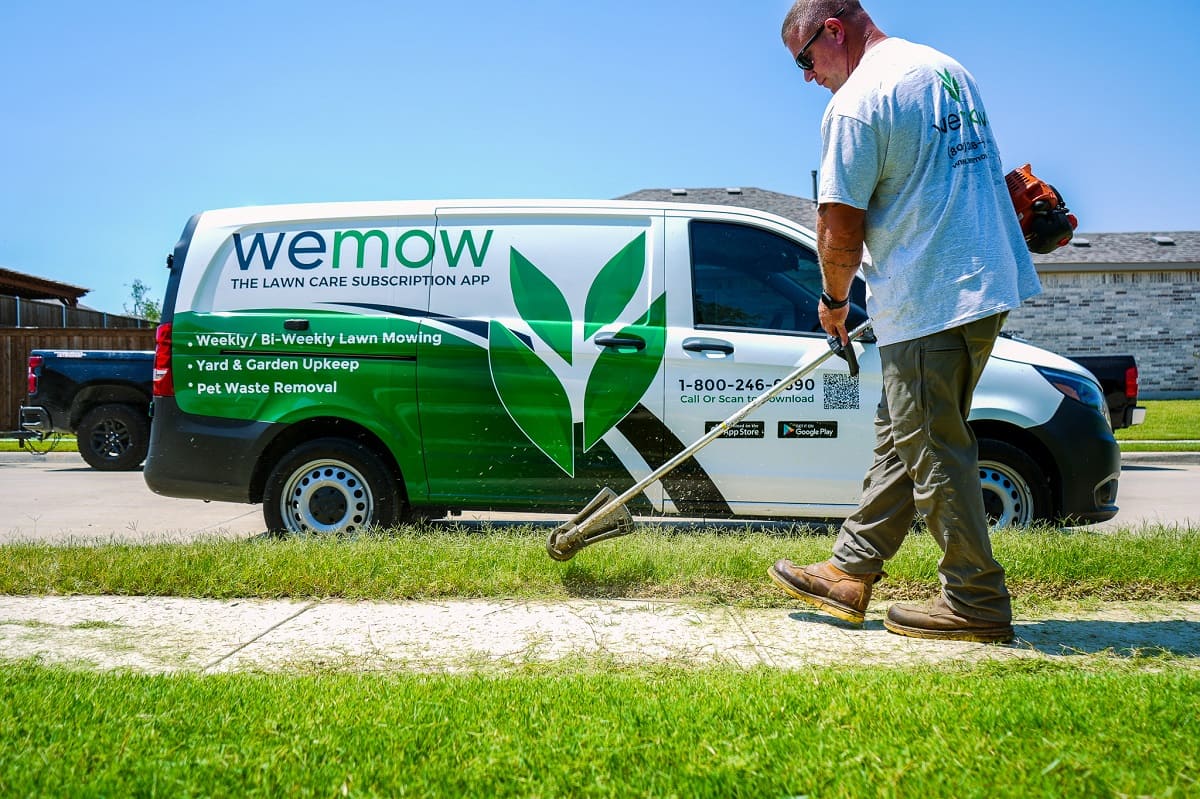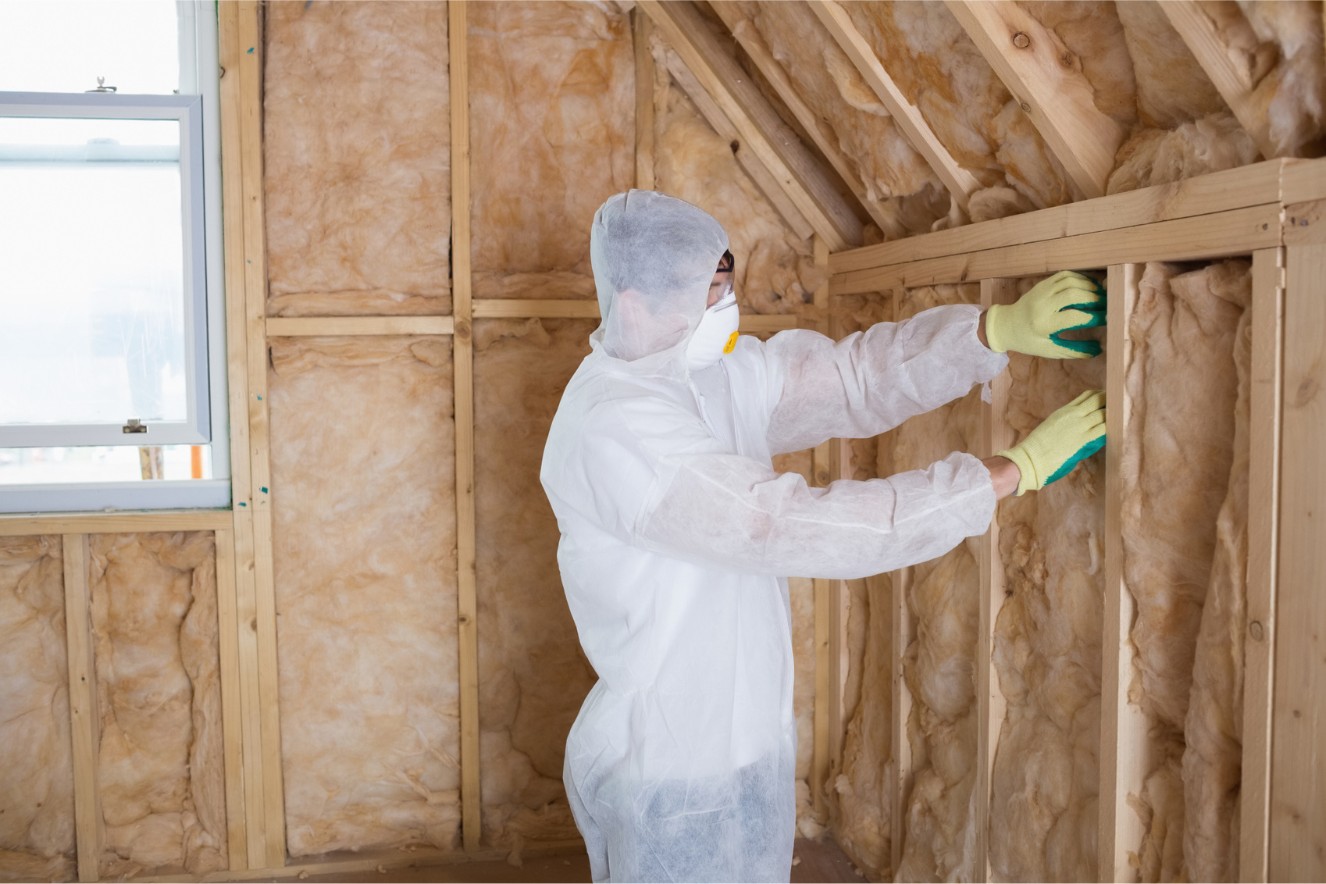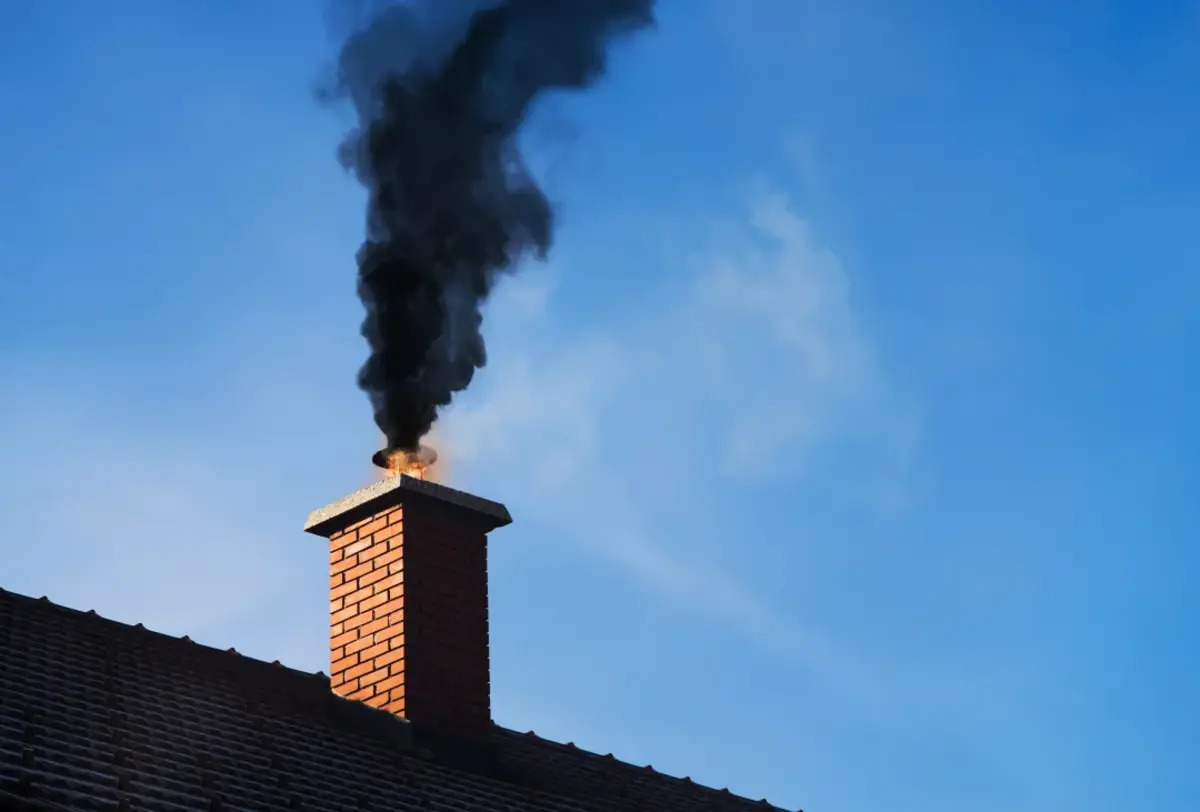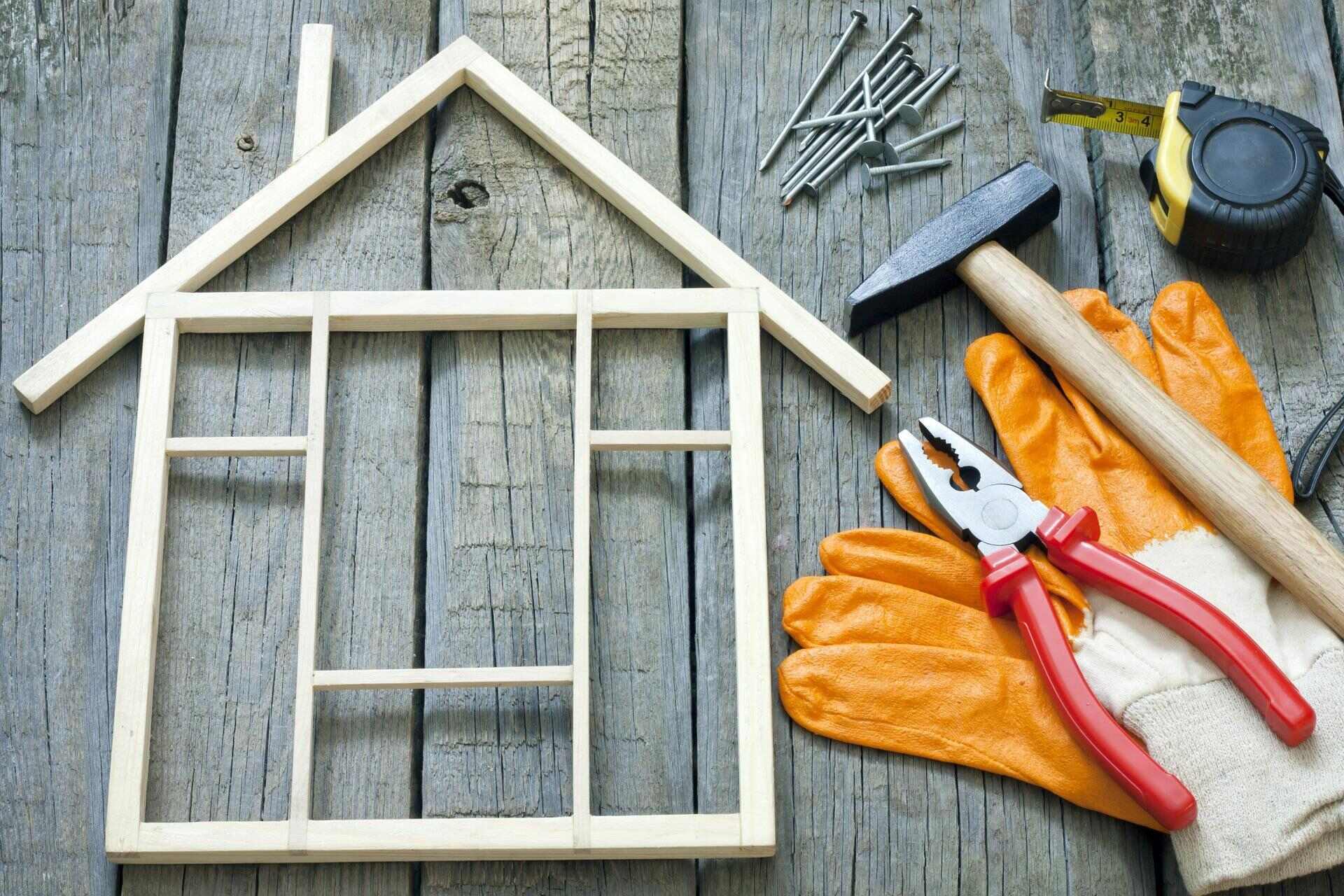Home>Home Maintenance>What If You Can’t Afford Home Repairs


Home Maintenance
What If You Can’t Afford Home Repairs
Modified: March 6, 2024
Discover what to do if you can't afford necessary home repairs. Get tips on budget-friendly solutions for home maintenance to keep your property in good shape.
(Many of the links in this article redirect to a specific reviewed product. Your purchase of these products through affiliate links helps to generate commission for Storables.com, at no extra cost. Learn more)
Introduction
Welcome to the world of homeownership, a place where you can create memories, establish roots, and build a haven that reflects your personality and style. But along with the joys of owning a home come the responsibilities of home maintenance and repairs. Unfortunately, not all homeowners have the means to afford necessary repairs, leaving them in a difficult and stressful position.
Life is unpredictable, and unexpected home repair issues can arise at any time. Whether it’s a leaking roof, a malfunctioning HVAC system, or a burst pipe, these problems can quickly turn into expensive and time-consuming projects. And for homeowners who are already dealing with financial constraints, these repairs can feel insurmountable.
But fear not! In this comprehensive guide, we’ll explore the various options available to homeowners who find themselves unable to afford necessary home repairs. From government assistance programs to non-profit organizations and cost-saving tips, there are resources and strategies you can leverage to tackle your home repair challenges.
Before we dive into the solutions, it’s essential to understand the importance of home repairs and why addressing them promptly is crucial for the longevity and value of your property.
Key Takeaways:
- Don’t panic if you can’t afford home repairs! There are government programs, non-profit organizations, and DIY tips to help you tackle the challenges and keep your home safe and comfortable.
- From financing options to seeking help from friends and community, there’s always a way to address home repair needs, even with financial constraints. Stay proactive, resourceful, and open to support!
Understanding the Importance of Home Repairs
Home repairs are not just about aesthetics; they play a vital role in maintaining the structural integrity and safety of your dwelling. Ignoring or delaying necessary repairs can lead to more significant issues down the line, which can be more expensive and time-consuming to fix.
Regular maintenance and prompt repairs help prevent further damage and deterioration. For example, a small leak in the roof can result in water damage to your ceiling, walls, and even the foundation of your home. The longer you wait to address the issue, the more extensive and costly the repairs will be. By tackling repairs promptly, you can avoid these spiraling expenses.
Moreover, addressing home repairs in a timely manner is crucial for the health and well-being of the occupants. For instance, a faulty electrical system can pose a safety hazard, while a broken furnace can make your home uncomfortable and even dangerous during the colder months. Taking care of these repairs ensures a safe and comfortable living environment for you and your family.
Another important aspect of home repairs is preserving the value of your property. Regular maintenance and necessary repairs help maintain the overall condition and aesthetics of your home. Neglecting repairs can have a significant impact on your home’s resale value, making it less appealing to potential buyers. By keeping your home in good repair, you not only ensure your own comfort but also protect your investment.
Understanding the importance of home repairs is the first step towards finding solutions to address them, even if finances are tight. In the next section, we’ll explore the common issues that homeowners face when it comes to affording home repairs.
Common Home Repair Issues
As a homeowner, it’s important to be aware of the common repair issues that can arise in your home. By recognizing these issues early on, you can take proactive steps to address them before they escalate into costly and extensive repairs. Here are some common home repair issues that homeowners often encounter:
- Plumbing Problems: This includes leaky faucets, clogged drains, and burst pipes. Plumbing issues can lead to water damage and even mold growth if not promptly addressed.
- Roofing Troubles: Leaks, damaged shingles, and sagging roofs are common roofing problems. A deteriorating roof can lead to water infiltration and structural damage if not repaired promptly.
- Electrical Faults: Flickering lights, tripping breakers, and faulty wiring are potential hazards that require immediate attention from a qualified electrician.
- Heating, Ventilation, and Air Conditioning (HVAC) Issues: Problems with the HVAC system can result in inadequate heating or cooling, poor air quality, and higher energy bills.
- Foundation and Structural Concerns: Cracks in the foundation, sagging floors, and bowing walls can indicate underlying structural issues that need professional intervention.
- Appliance Failures: Malfunctioning appliances, such as refrigerators, washers, dryers, and dishwashers, can disrupt daily routines and may require repair or replacement.
- Windows and Doors: Damaged windows and doors can lead to energy loss, drafts, and compromised security.
These are just a few examples of the common home repair issues that homeowners encounter. It’s important to keep an eye out for any signs of these problems and address them promptly to prevent further damage and expenses. However, if you find yourself financially unable to tackle these repairs, don’t worry. In the following sections, we’ll explore various strategies and resources that can help you overcome this hurdle and get your home back in top shape.
Factors Contributing to Inability to Afford Home Repairs
Home repairs can be costly, and for many homeowners, affordability becomes a significant challenge. There are several factors that can contribute to the inability to afford necessary home repairs. Understanding these factors can help homeowners identify the root causes and explore appropriate solutions. Here are some common factors contributing to the inability to afford home repairs:
- Financial Constraints: Limited income or high debt can make it difficult to set aside funds for home repairs. Prioritizing other financial obligations, such as bills, mortgage payments, and healthcare expenses, may leave little room for home repair expenses.
- Lack of Emergency Savings: Many homeowners do not have an emergency savings fund specifically set aside for unexpected repair expenses. Without such savings, they may struggle to cover the costs of necessary repairs when they arise.
- Limited Homeowners Insurance Coverage: Some homeowners may have limited or no insurance coverage for specific repair issues. This can leave them responsible for the full cost of repairs, making it harder to afford the necessary fixes.
- Aging Homes: Older homes are more prone to wear and tear, requiring frequent repairs and maintenance. The expenses associated with maintaining an older home can be overwhelming for homeowners, especially if they were not prepared for the ongoing costs.
- Unemployment or Underemployment: Loss of a job, reduction in hours, or being underemployed can significantly impact a homeowner’s ability to afford repairs. The lack of a stable income makes it challenging to allocate funds for necessary home repairs.
- Unforeseen Circumstances: Unexpected events such as medical emergencies, natural disasters, or unforeseen family expenses can deplete savings and disrupt financial stability. In such situations, homeowners may find it difficult to allocate funds for home repairs.
It’s important to recognize that financial limitations can be temporary, and there are resources available to help homeowners overcome these challenges. In the following sections, we’ll explore various financing options, government assistance programs, and non-profit organizations that provide home repair assistance. We’ll also provide some DIY approaches and cost-saving tips that can help homeowners tackle repairs within their means. Remember, there is always a solution, and you’re not alone in this journey!
Exploring Financing Options for Home Repairs
When facing home repair expenses that are beyond your immediate financial means, exploring financing options can provide a viable solution. Here are some financing options to consider when you can’t afford home repairs:
- Personal Loans: Personal loans are a common option for financing home repairs. They offer a lump sum of money that can be used for repairs and must be paid back over a fixed term with interest. It’s essential to compare interest rates and terms from different lenders to find the most favorable loan for your situation.
- Home Equity Loans or Lines of Credit: If you have built up equity in your home, you may be eligible for a home equity loan or line of credit. These loans allow you to borrow against the value of your home, using it as collateral. The interest rates tend to be lower than personal loans, making it a more affordable financing option.
- Credit Cards with Promotional Offers: Some credit cards offer introductory 0% interest rates on purchases for a specified period. If your repair expenses are relatively small and you can pay off the balance within the promotional period, this can be a convenient financing option. However, be cautious of high interest rates once the promotional period expires.
- Home Improvement Loans: Some financial institutions offer specific loans for home improvement projects. These loans may come with lower interest rates and longer repayment terms, making them a suitable option for larger home repair projects.
- Refinancing Your Mortgage: If you have sufficient equity in your home, refinancing your mortgage may allow you to access the funds needed for repairs. By refinancing, you can replace your current mortgage with a new one, potentially at a lower interest rate, and borrow additional funds for repairs.
- Community Development Financial Institutions (CDFIs): CDFIs are financial institutions that provide lending and other financial services to low-income communities. They often offer loans specifically tailored to home repairs and improvements, with more flexible terms and lower interest rates than traditional lenders.
Before committing to any financing option, thoroughly research and consider the terms, interest rates, and repayment plans. It’s essential to choose an option that aligns with your financial circumstances and allows you to comfortably repay the loan without adding undue financial strain.
Remember, financing should be a carefully considered decision, and it’s crucial to weigh the potential long-term costs against the immediate need for repairs. In some cases, exploring other avenues of assistance, such as government programs and non-profit organizations, may provide more suitable solutions. We’ll discuss those in the following sections.
Consider looking into government assistance programs or non-profit organizations that offer home repair grants or low-interest loans for homeowners in need. These programs can help you cover the costs of necessary repairs when you can’t afford them on your own.
Read more: Why Cant You Recycle Pizza Boxes
Government Assistance Programs for Home Repairs
When homeowners are unable to afford necessary repairs, government assistance programs can be a valuable resource. These programs aim to provide financial assistance and support to individuals and families facing home repair challenges. Here are some government assistance programs to explore:
- US Department of Housing and Urban Development (HUD) Programs: HUD offers several programs that provide grants, loans, and counseling services for homeowners. The FHA 203(k) loan program specifically assists with financing home repairs and renovations.
- USDA Rural Repair and Rehabilitation Grant: This program provides grants to low-income homeowners in rural areas to assist with necessary repairs, improvements, and accessibility modifications.
- Weatherization Assistance Program: Administered by the US Department of Energy, this program offers free weatherization services to low-income households, including repairs and upgrades that improve energy efficiency and reduce utility costs.
- Energy Assistance Programs: Many states offer energy assistance programs to help low-income homeowners with energy-related repairs and upgrades. These programs often focus on improving insulation, air sealing, and HVAC systems to increase energy efficiency.
- Home Energy Assistance Program (HEAP): HEAP is a federally funded program that assists low-income households with their energy bills. In some cases, it may provide additional funding for energy-related repairs or improvements.
- Community Development Block Grant: CDBG grants are provided to state and local governments to support a wide range of community development initiatives, including housing rehabilitation and repair programs.
- State and Local Programs: Many states and local municipalities offer their own home repair programs and initiatives. These programs may vary widely in terms of eligibility, funding, and services provided, so it’s worth researching what programs are available in your area.
When exploring government assistance programs, it’s important to review the eligibility criteria, application process, and available funds. These programs often have limited funding and may have a waiting list, so it’s advisable to apply as early as possible.
In addition to government programs, non-profit organizations also offer support for homeowners facing repair challenges. In the next section, we’ll explore some non-profit organizations that provide home repair assistance.
Non-Profit Organizations Providing Home Repair Assistance
Non-profit organizations are another valuable resource for homeowners who cannot afford necessary repairs. These organizations work towards improving housing conditions for low-income individuals and families. Here are some non-profit organizations that provide home repair assistance:
- Habitat for Humanity: Habitat for Humanity is a well-known non-profit organization that helps low-income individuals and families build and repair their homes. They offer affordable loan options, volunteer labor, and partnerships with local contractors to help homeowners with various repair needs.
- Rebuilding Together: Rebuilding Together is a national non-profit organization that provides home repair services to low-income homeowners, specifically focusing on improving safety and accessibility. They coordinate volunteer efforts and utilize donated materials to keep costs low.
- Homeowners’ Emergency Mortgage Assistance Program (HEMAP): HEMAP, available in some states, provides assistance to homeowners facing foreclosure due to financial hardship. The program may offer funds to help with mortgage payments or other housing-related expenses, including necessary repairs.
- Local Housing and Community Development Organizations: Many local non-profit organizations focus on community development and have programs dedicated to home repair assistance. These organizations often collaborate with volunteers, contractors, and government agencies to address the housing needs of low-income homeowners.
When seeking assistance from non-profit organizations, it’s important to research and contact organizations in your local area to inquire about their services, eligibility requirements, and application processes. Keep in mind that non-profit organizations may have limited resources and may prioritize households based on specific criteria, such as income level and urgency of repairs.
In addition to accessing government programs and nonprofit organizations, there are DIY approaches and cost-saving tips that homeowners can utilize to address home repairs within their means. We’ll cover those in the next section.
DIY Approaches and Cost-Saving Tips for Home Repairs
When facing financial constraints, homeowners can turn to DIY approaches and cost-saving tips to tackle home repairs within their means. Here are some strategies to consider:
- Research and Education: Take advantage of the vast resources available online, such as tutorials, guides, and instructional videos. By educating yourself about the repair process, you may be able to handle certain repairs on your own.
- Start Small: Begin with smaller repair projects that are within your comfort zone and skill level. This allows you to save money on labor costs and gain confidence in your abilities.
- Borrow or Rent Tools: Instead of purchasing expensive tools that you may rarely use, consider borrowing or renting the necessary tools from friends, neighbors, or local hardware stores.
- Reuse and Recycle Materials: When possible, repurpose or recycle materials from old or unused items. This can help reduce costs and minimize waste in your repair projects.
- Shop Smart: Compare prices, look for discounts, and shop sales to save money on materials and supplies needed for repairs. Consider visiting salvage yards or second-hand stores for affordable or gently-used items.
- Prioritize Essential Repairs: Focus on repairing issues that pose safety hazards or lead to further damage if left unattended. Addressing these critical repairs first can prevent more costly repairs in the future.
- Embrace Preventative Maintenance: Regularly maintain your home to prevent the need for major repairs. This includes tasks such as cleaning gutters, sealing gaps, and changing HVAC filters.
- Seek Advice from Community: Reach out to your community or neighborhood groups for advice and support. You may find individuals with DIY skills who are willing to lend a hand or offer guidance.
- Network and Barter: Consider exchanging skills with friends, neighbors, or community members. You might have expertise in an area that they need assistance with, and vice versa.
While DIY approaches and cost-saving tips can be beneficial, it’s important to ensure your safety and be realistic about your abilities. If a repair project is beyond your skill level or requires specialized knowledge, it is best to consult a professional to avoid causing further damage or compromising your safety.
Lastly, don’t underestimate the power of seeking assistance from friends, family, and your community. In the next section, we’ll discuss how reaching out for support can help alleviate the financial burden of home repairs.
Seeking Assistance from Friends, Family, and Community
When facing financial constraints that make home repairs difficult to afford, one of the most valuable resources you have is your network of friends, family, and community. Here are some ways you can seek assistance and support:
- Ask for Help: Reach out to friends and family to see if anyone has the skills or knowledge needed to assist with your home repairs. Many people are willing to lend a hand or provide guidance, especially if you offer to return the favor in some way.
- Organize a Repair Party: If you have several smaller repair projects that require some labor, consider hosting a repair party where friends, family, and community members gather to help with the repairs. Offering food or exchanging skills can make it a fun and productive event.
- Join Community Organizations: Get involved in local community organizations or clubs that focus on home improvement or housing issues. These groups often have resources, connections, and volunteers who can help with home repairs or provide valuable advice.
- Utilize Neighborhood Services: Some neighborhoods or cities offer services or resources for home repairs, such as tool libraries, community workshops, or shared equipment. Take advantage of these opportunities to access tools and expertise without the need for purchasing them.
- Participate in Local Fundraisers: Stay informed about local fundraisers or community events that support home repairs or housing initiatives. By participating and contributing, you can not only access potential financial assistance but also meet others in similar situations and learn about additional resources.
- Engage in Skill Exchange: Offer your own skills or services in exchange for assistance with home repairs. Whether it’s offering to babysit, cooking a meal, or providing professional services, you can barter with others to help one another.
- Share Resources: Connect with neighbors and community members to share resources, such as tools, equipment, or even contractor recommendations. By pooling resources, you can save money and make home repairs more affordable for everyone involved.
Remember, when seeking assistance, communication and gratitude are key. Be clear about your needs and limitations, express your gratitude for any help received, and always be willing to reciprocate or pay it forward in any way you can.
By tapping into the power of your friends, family, and community, you can find the support needed to overcome financial constraints and address home repairs. Finally, let’s conclude with a summary of the key takeaways from this article.
Conclusion
Home repairs are an inevitable part of homeownership, but what happens when you can’t afford them? While it may feel overwhelming, there are various avenues to explore and resources available to help you overcome financial constraints and address your home repair needs.
In this comprehensive guide, we’ve discussed the importance of home repairs for the safety, comfort, and value of your property. We’ve also explored common home repair issues that homeowners face and identified the factors that contribute to the inability to afford these necessary repairs.
From here, we’ve delved into strategies for financing repairs, including personal loans, home equity options, and credit cards with promotional offers. We’ve also highlighted government assistance programs such as those offered by the US Department of Housing and Urban Development (HUD) and non-profit organizations like Habitat for Humanity and Rebuilding Together.
If financing options are limited, we’ve provided DIY approaches and cost-saving tips that can be valuable in addressing smaller repairs on your own. Additionally, we encourage you to seek assistance from friends, family, and community members who may have the skills, knowledge, or resources to help you tackle more significant projects.
Remember, the key is to be proactive in managing home repairs. Prioritize essential repairs, explore financing options, and reach out for assistance when needed. By taking these steps, you can maintain the integrity and value of your home while ensuring a safe and comfortable living environment for yourself and your loved ones.
Lastly, always stay informed about local resources, government programs, and community initiatives that can provide support for homeowners facing repair challenges. By leveraging these resources and seeking assistance when necessary, you can find affordable solutions to address your home repair needs.
No matter the financial constraints, there is always a path forward. With determination, resourcefulness, and a supportive network, you can navigate the challenges and restore your home to its full potential. Together, let’s make home repairs a manageable and empowering journey.
Frequently Asked Questions about What If You Can't Afford Home Repairs
Was this page helpful?
At Storables.com, we guarantee accurate and reliable information. Our content, validated by Expert Board Contributors, is crafted following stringent Editorial Policies. We're committed to providing you with well-researched, expert-backed insights for all your informational needs.














0 thoughts on “What If You Can’t Afford Home Repairs”